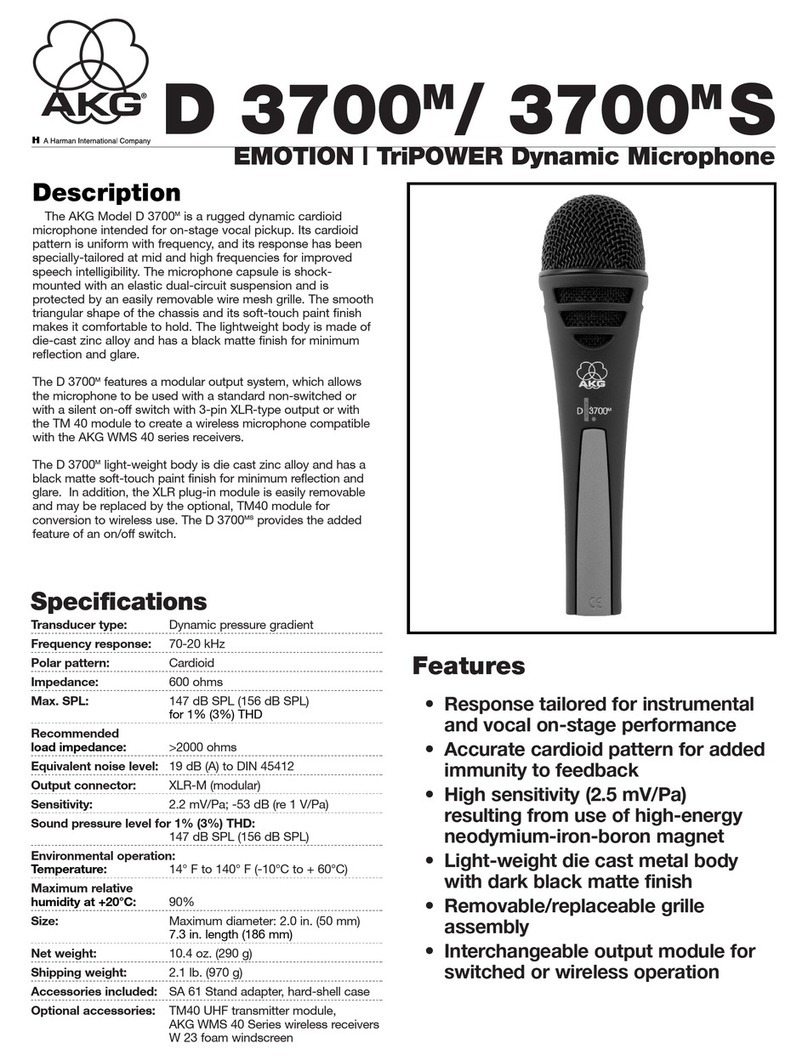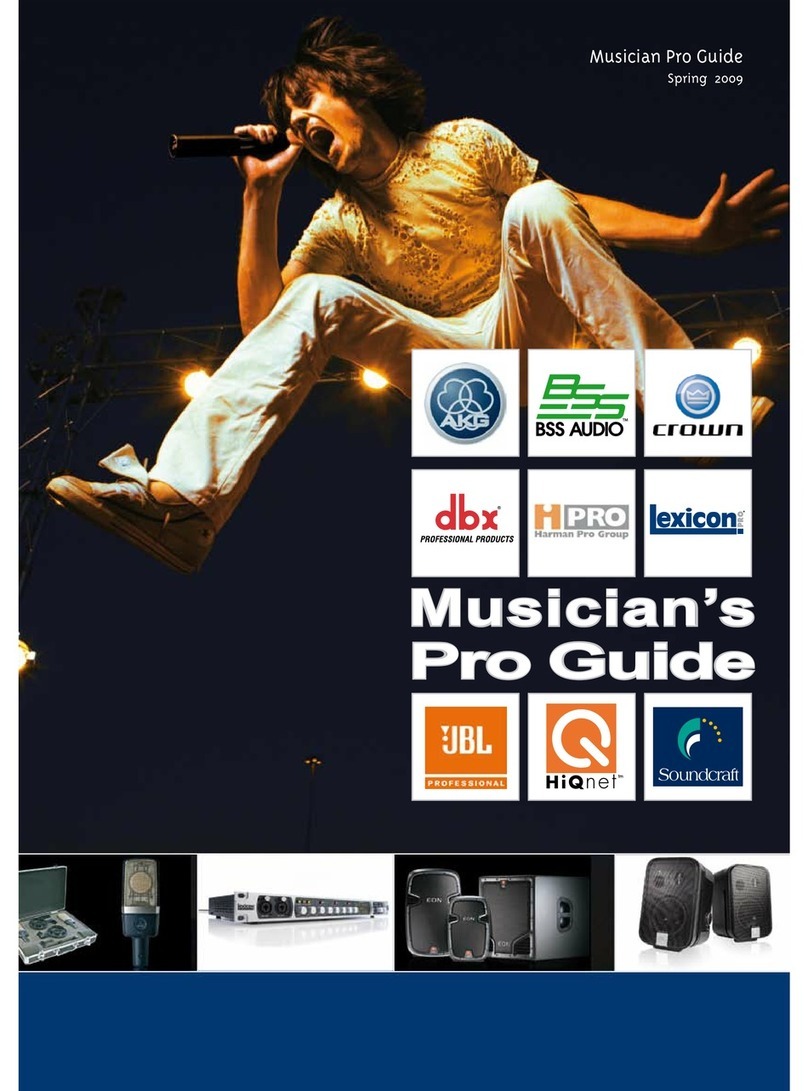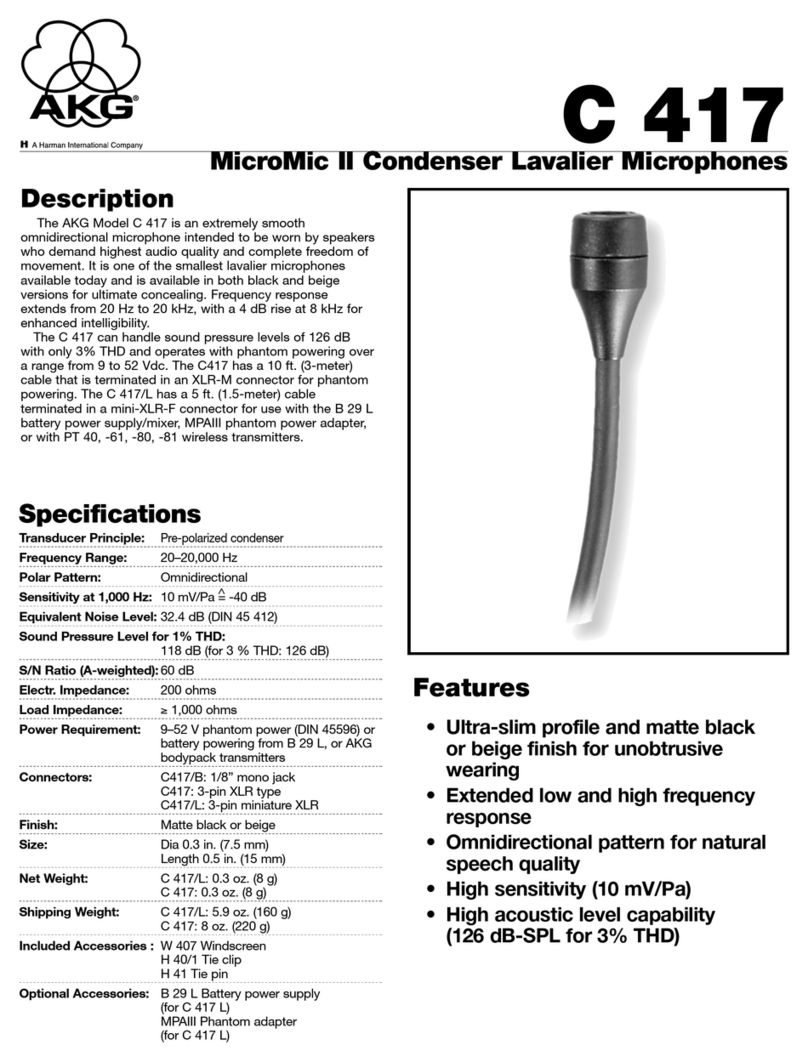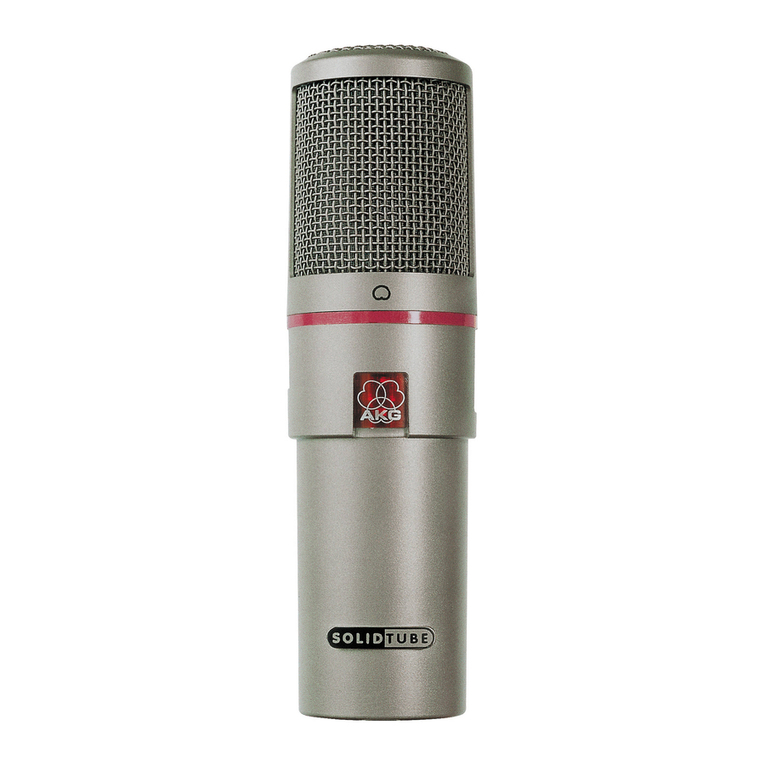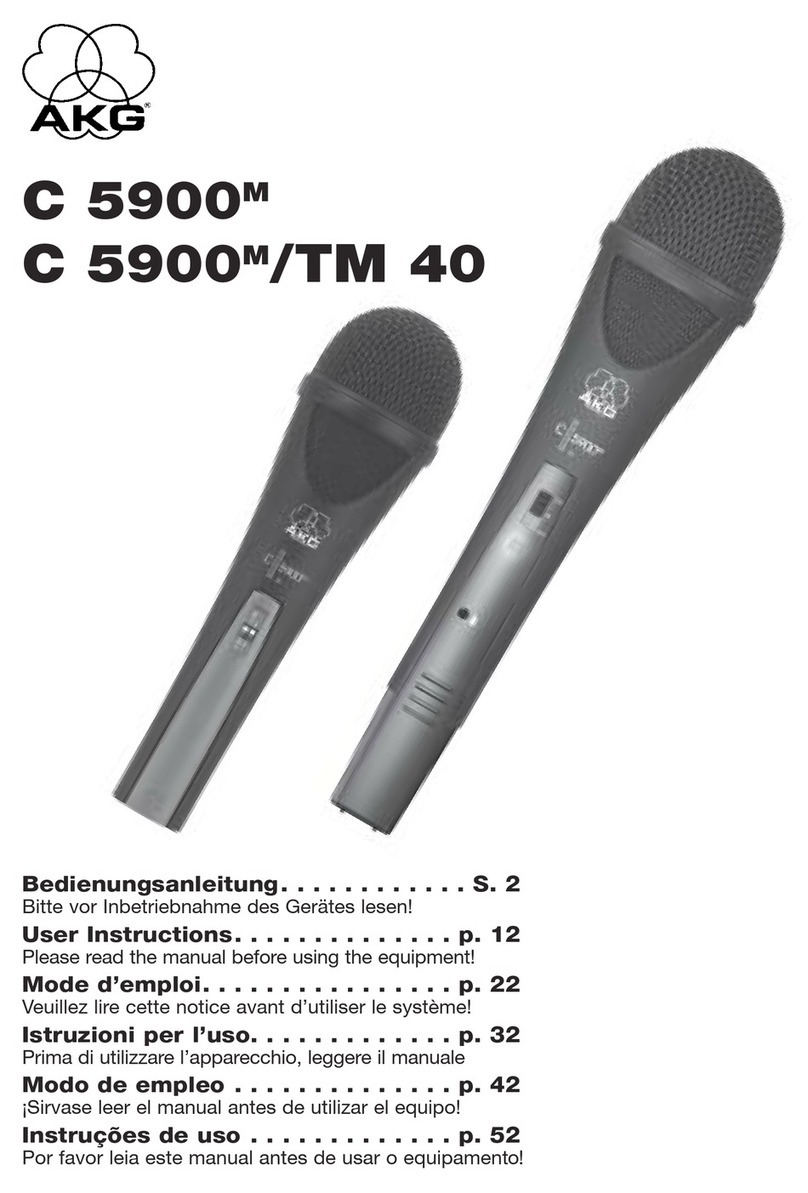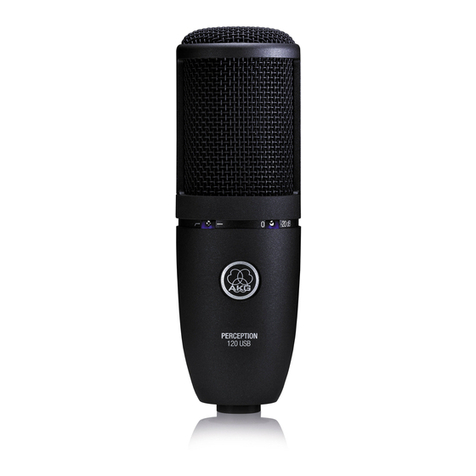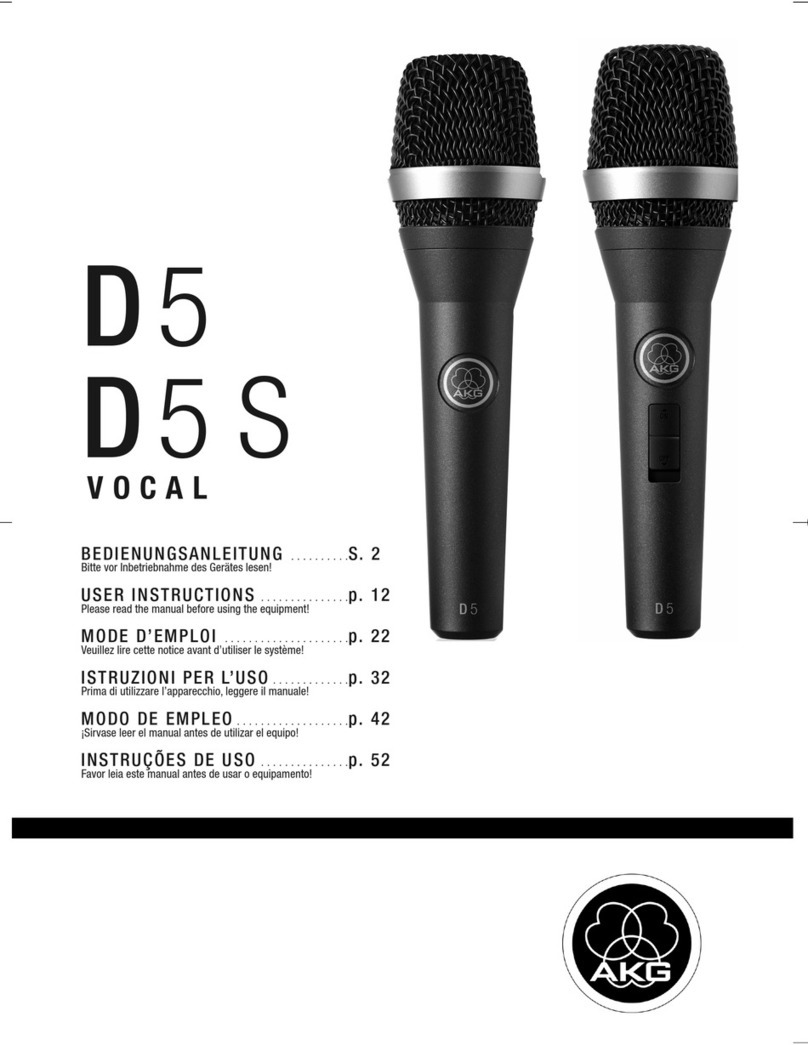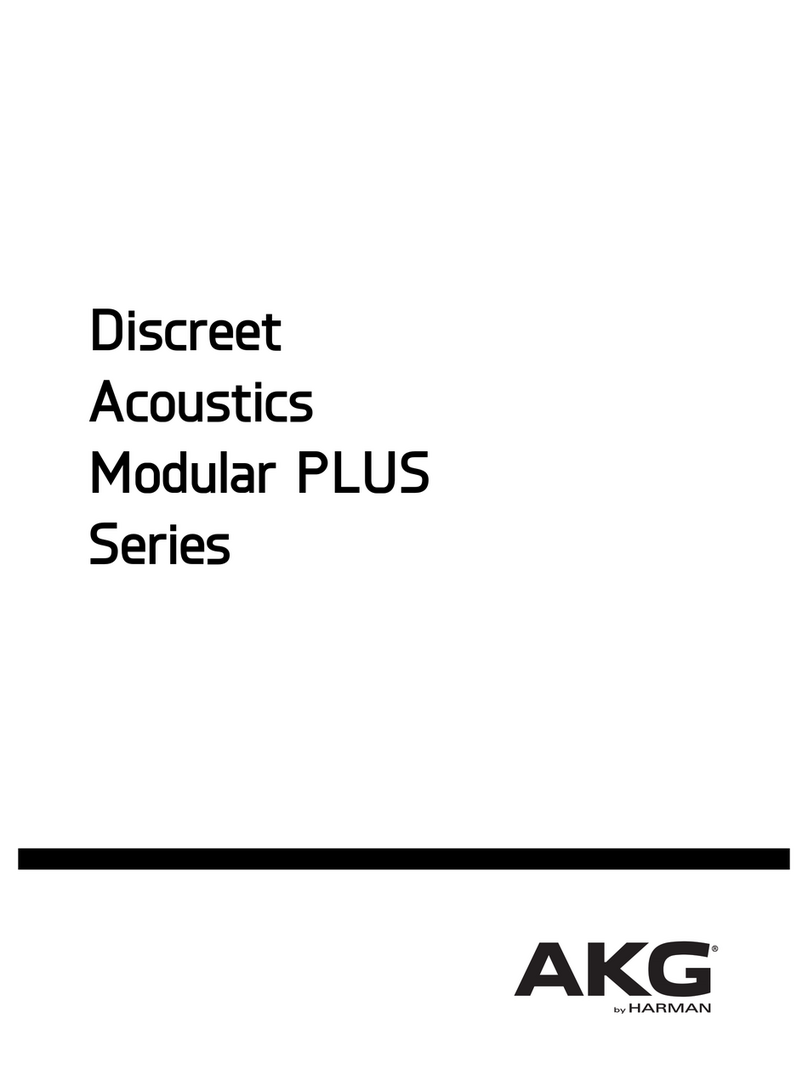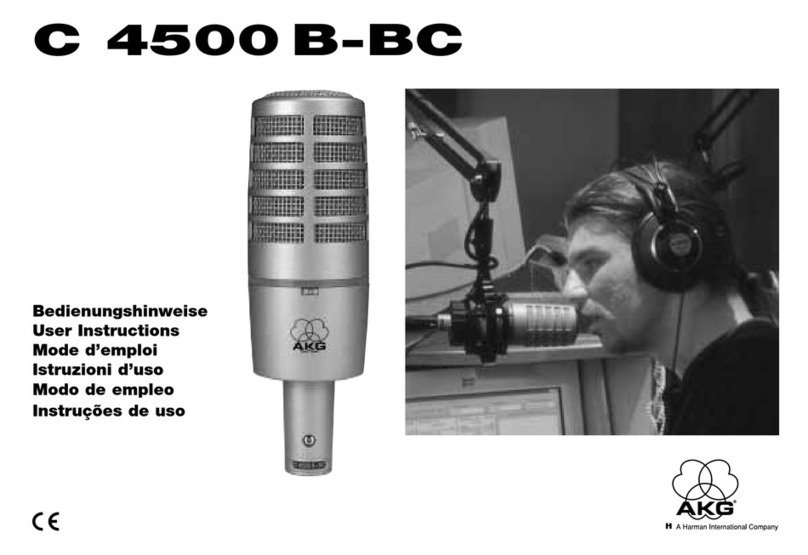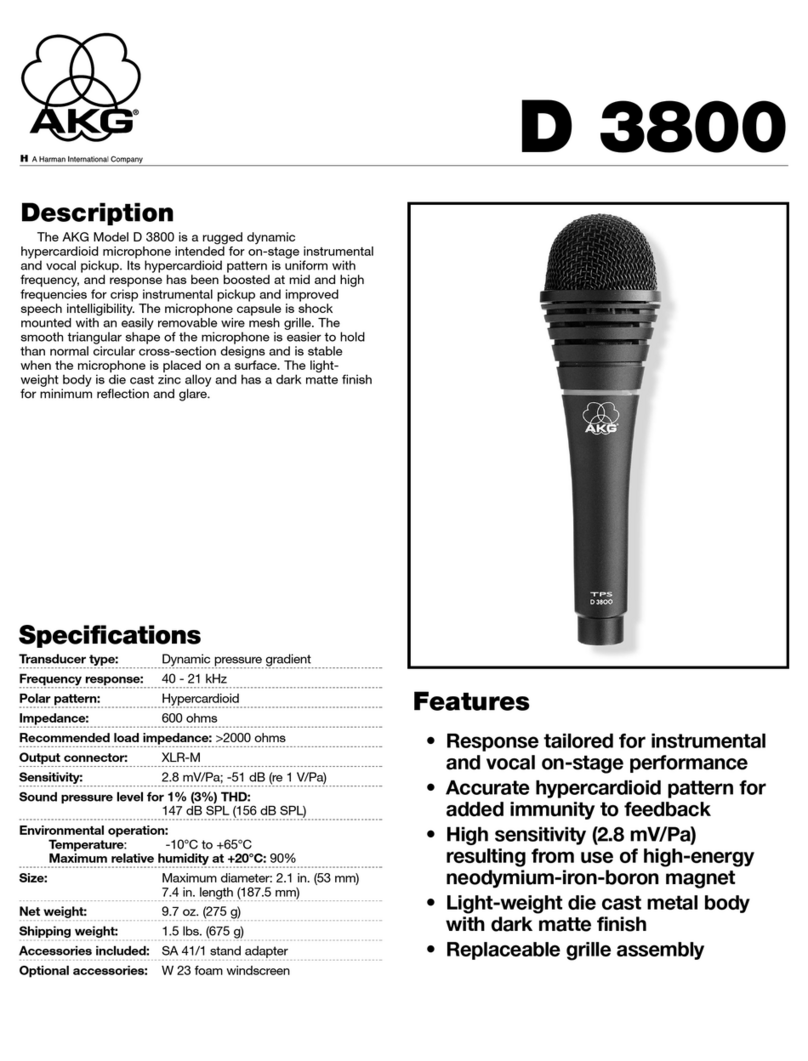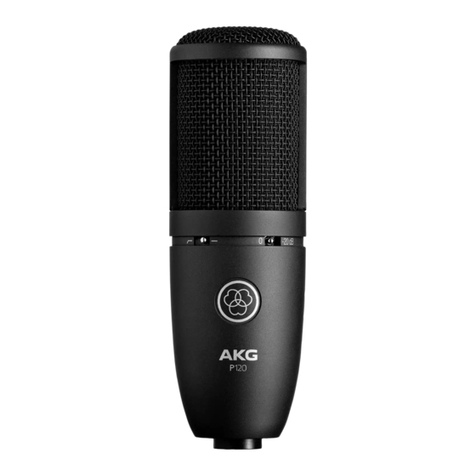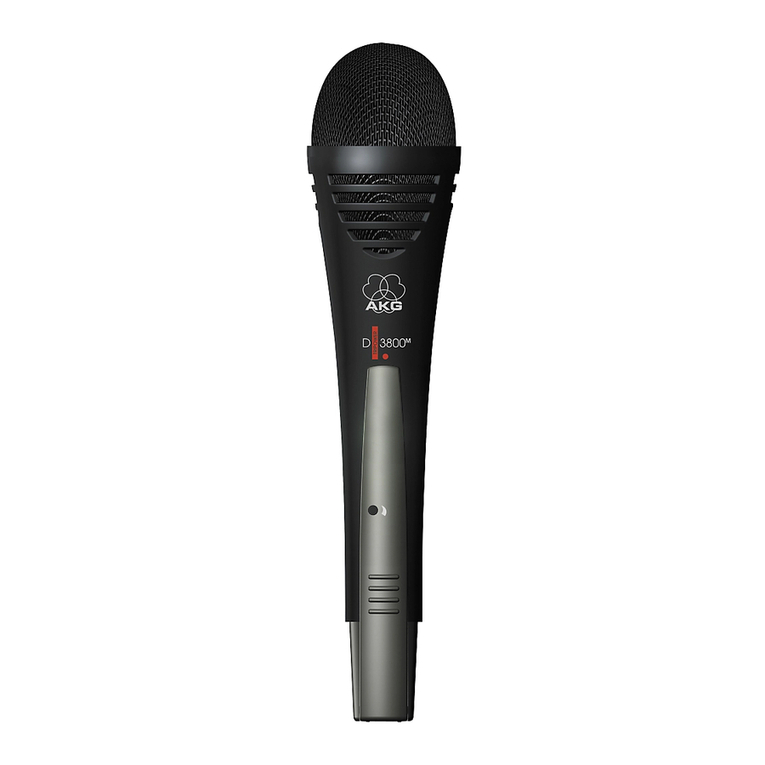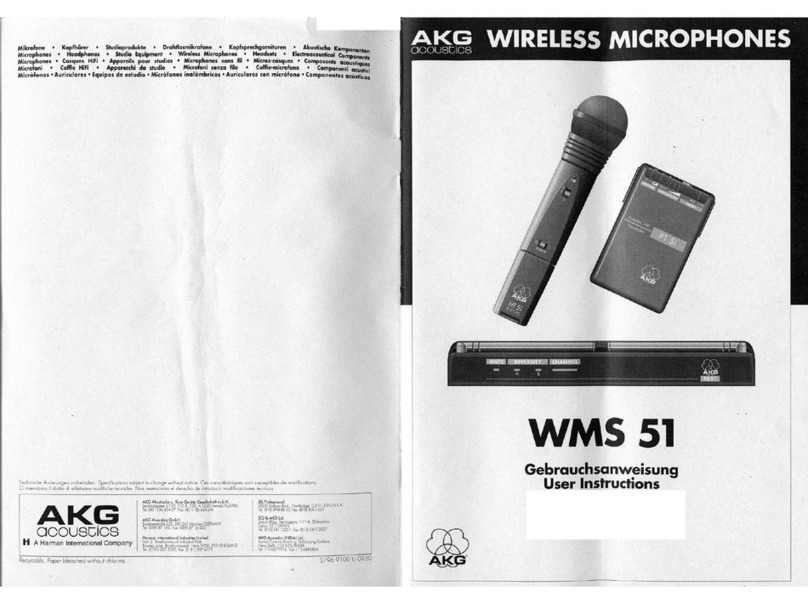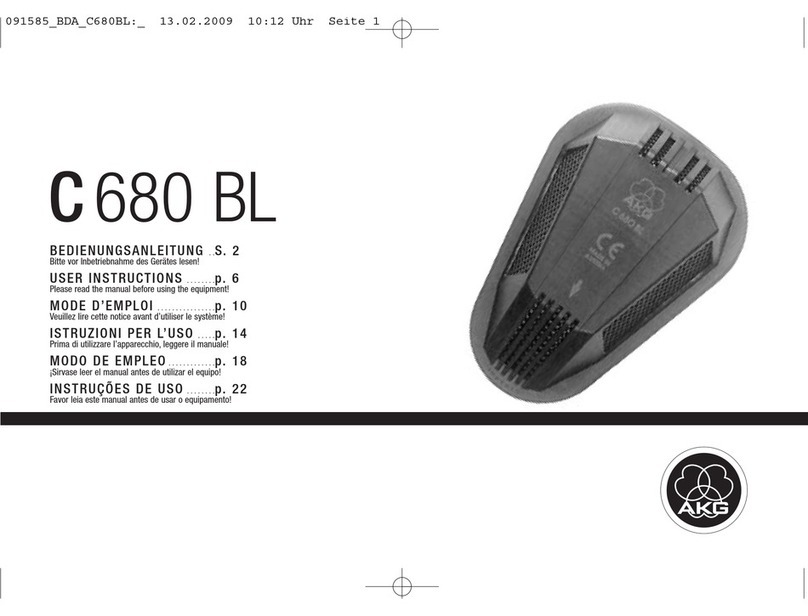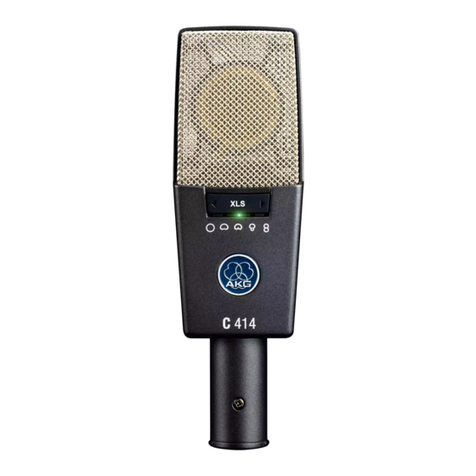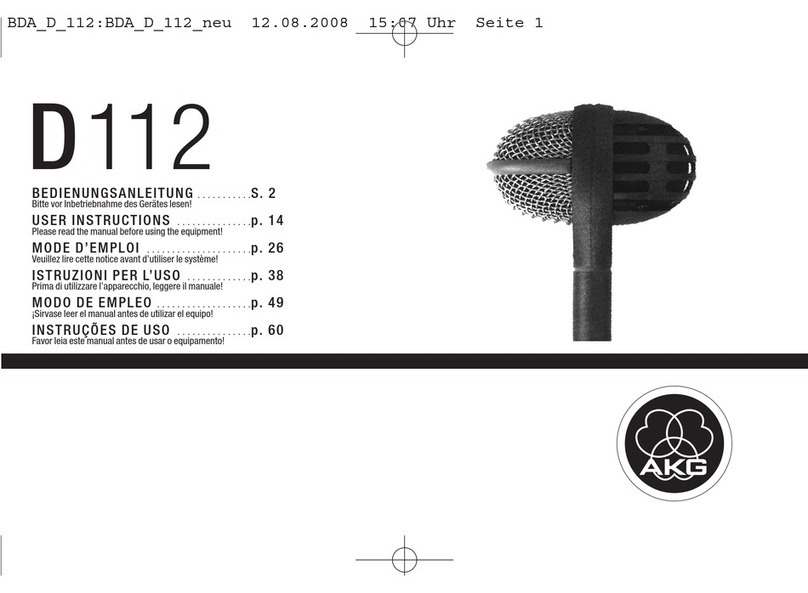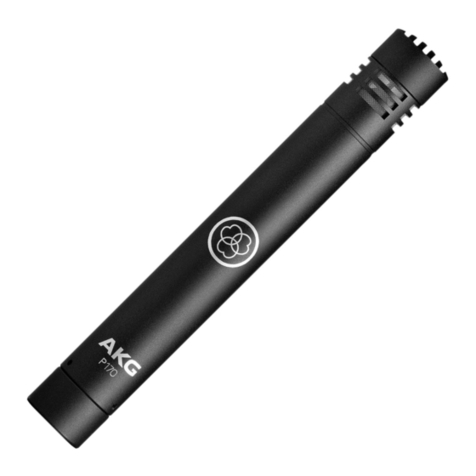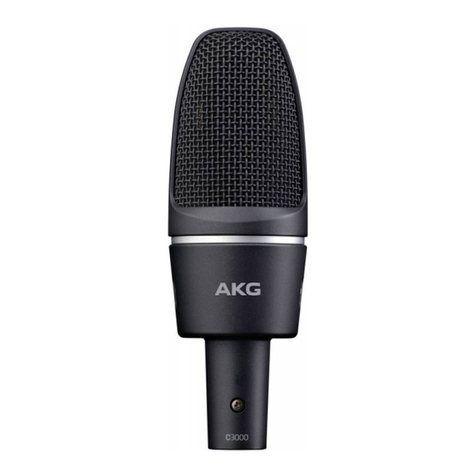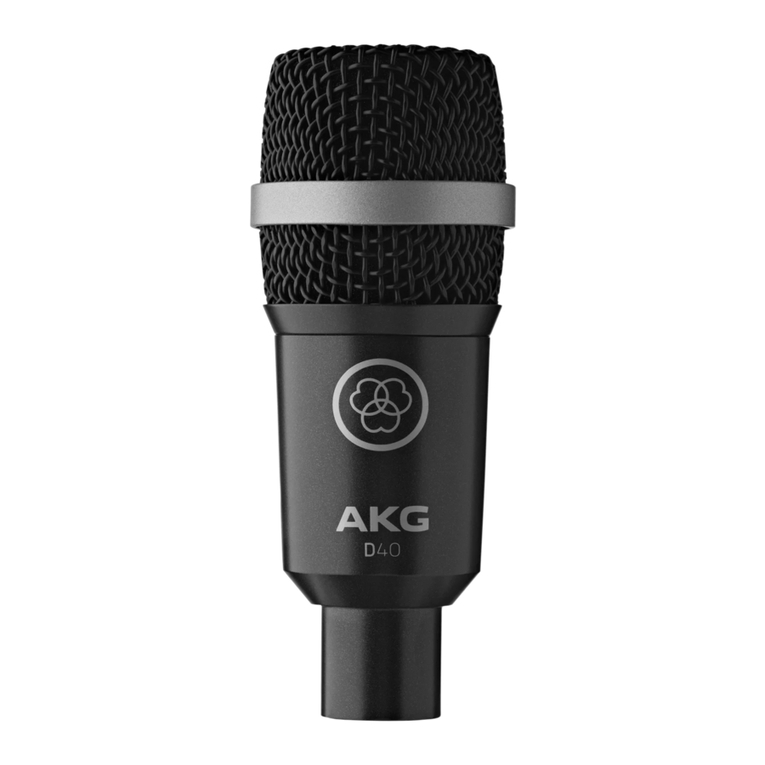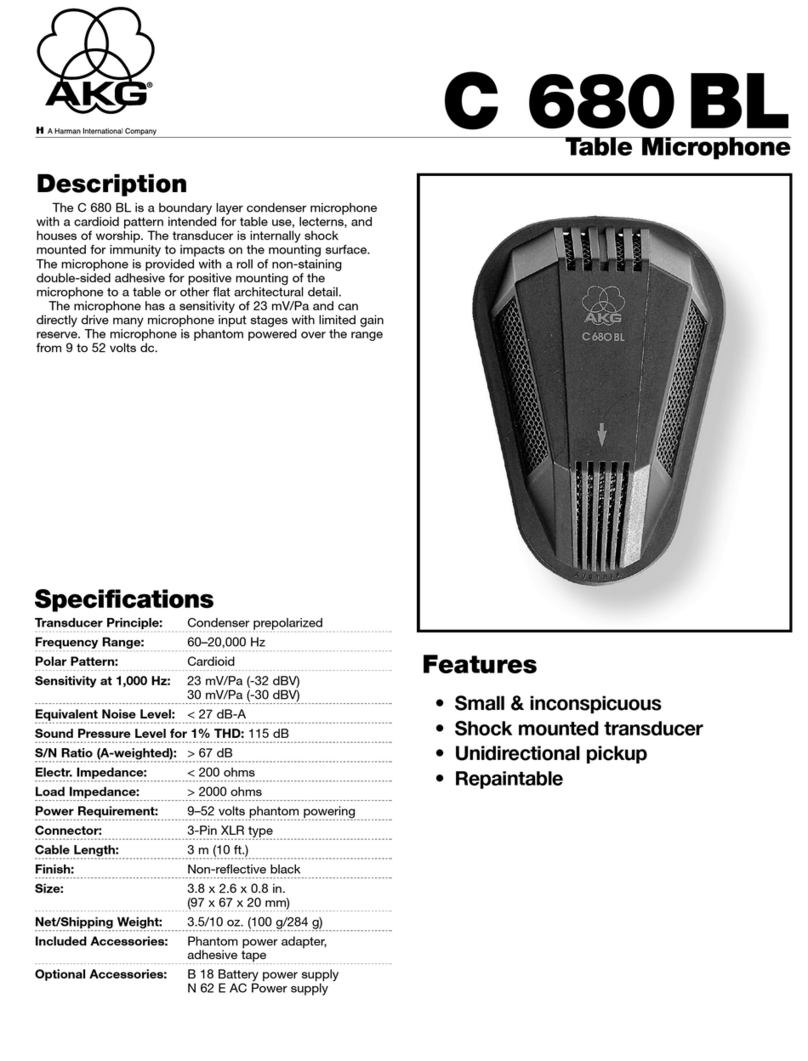2
1.1 Sicherheits-
hinweis
1.2
Lieferumfang
1.3 Besondere
Merkmale
1.4 Kurz-
beschreibung
Überprüfen Sie bitte, ob das Gerät, an das Sie das
Mikrofon anschließen möchten, den gültigen Si-
cherheitsbestimmungen entspricht und mit einer
Sicherheitserdung versehen ist.
Kontrollieren Sie bitte, ob die Verpackung alle
oben angeführten Teile enthält. Falls etwas fehlt,
wenden Sie sich bitte an Ihren AKG-Händler.
• Robustes Kondensatormikrofon für Instrumen-
talabnahme auf der Bühne.
• Linearer Frequenzgang, daher speziell für die
Overheadabnahme von Becken und Hi-Hat
geeignet.
• Integrierter Windschutz zur wirkungsvollen Un-
terdrückung von Luftgeräuschen.
• Elastische Lagerung des Wandlersystems zur
wirkungsvollen Körperschallunterdrückung.
• Hohe Rückkopplungssicherheit durch fre-
quenzunabhängige nierenförmige Richt-
charakteristik.
Das C 430 ist ein Kondensator-Richtmikrofon
(Druckgradientenempfänger). Es wurde speziell
als Instrumentalmikrofon für den harten Büh-
neneinsatz entwickelt. Als Kondensatormikrofon
mit linearem Frequenzgang liefert es einen beson-
ders klaren, ausgewogenen Sound und eignet
sich daher optimal als Overhead-Mikrofon für die
Abnahme von Becken und Hi-Hats. Durch seine
1 Sicherheitshinweis/Beschreibung
1 C 430 1 SA 40 1 W 32

